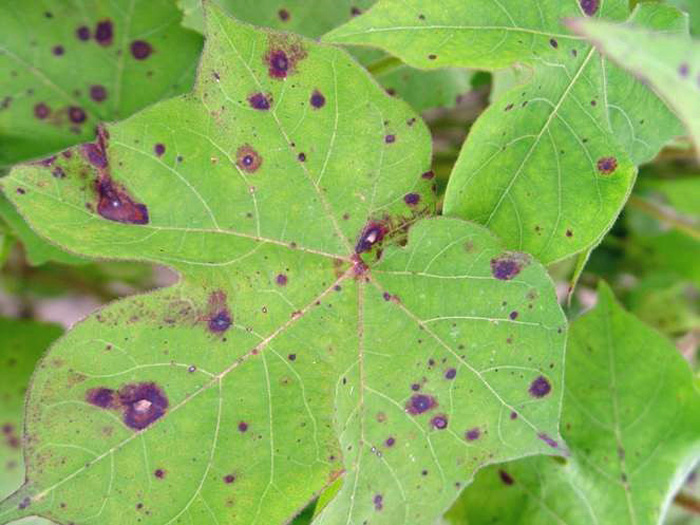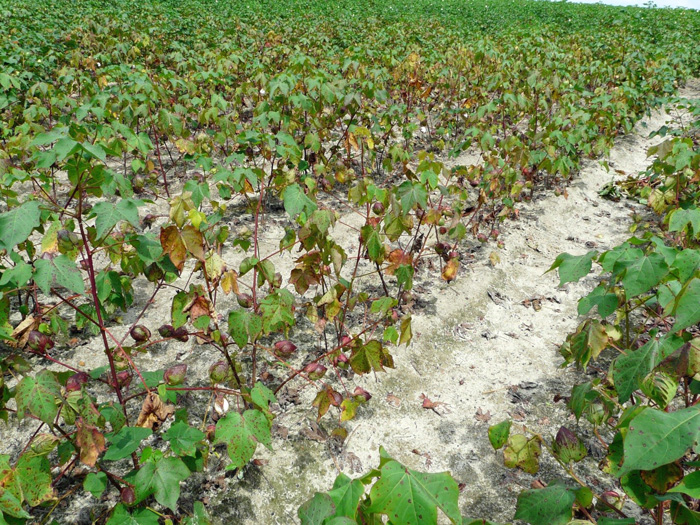
Stemphylium in cotton. Image credit: Thomas County Ag
Now is the time to implement potassium (K) management plans for cotton. Late-season K deficiency is linked to cotton leafspot (Stemphylium) disease. Stemphylium begins with minor leaf spotting and can lead to severe premature defoliation under certain circumstances.
Potassium in plant cells is vital for the regulation of water use (through stomatal activity) and crop quality, among other systems. Demand for K in cotton increases dramatically during boll set, as the boll requires sufficient K to maintain water pressure for fiber elongation. Since K is mobile in the plant, the heavy demand for K in bolls can remove K from leaves, leaving them prone to K deficiency. In turn, the K deficiency in leaves decreases cell strength and increases vulnerability to fungal infection. The problem is exacerbated when drought occurs during boll set, since the plant cannot take up sufficient K from the soil solution, even if soil K levels are adequate.
Full season varieties under irrigation with heavy fruit set and insufficient K in the fourth week of bloom are the most prone to Stemphylium infection, because of the high K demand at that time. There are also reports that some short-season varieties have such short but intense periods of K demand that it can be difficult to supply sufficient K to the plant. Other circumstances that may lead to Stemphylium problems include high soil magnesium (Mg) levels, which may compete with K uptake, although this is uncommon.

Premature defoliation in cotton due to Stemphylium. Image credit: Thomas County Ag
Although there are fungicides labeled for control of Stemphylium in cotton, fungicide applications are often not effective once the disease is established.
Do:
- Soil test and keep other nutrients, such as Ca and Mg, in balance.
- Split K applications, especially on sandy soils. Apply half at planting and the other half around first square.
- Petiole test to determine if a foliar K application may be needed. Foliar applications should be made during the first four weeks of bloom, if required.
Don’t:
- Over-fertilize with K to try to avoid the problem. This may throw your other nutrient balances out of whack.
Please contact your local agriculture extension agent for more information. You can follow Dr. Michael Mulvaney on Twitter @TheDirtDude, for updates throughout the season.
More information on cotton fertilization:
Cotton Cultural Practices and Fertility Management
- Four Early-Season Lessons from 2020 Peanut Production - April 9, 2021
- Sprayer Calibration Tables – Calibration Made Easy - October 30, 2020
- Stand Issues – Should You Replant Your Peanut Field? - May 15, 2020
